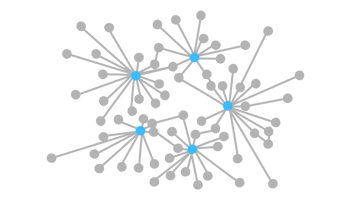With fundamental changes to how we work and organize under way, Organization Development (OD) practitioners are in high demand by senior management and business partners. Based on our extensive work in the field, we see four key imperatives for OD leaders to shape their function and live up to its promise building effective and sustainable organizations.
Organization Development (OD) is not in crisis. I know many highly regarded and impactful OD practitioners and departments, across a range of industries, who are in high demand from their organizations’ business partners and leaders. The profile of the OD function seems to be rising again, with top executives recognizing the value OD can create by building organizational capabilities.
But the tasks, and thus the approaches, of OD are rapidly evolving. One key driver for this is management innovations and new forms of organizing, in addition to fundamental and fast-paced transformations across many industries. Thus, the experts for organizational processes and change are being asked new questions – and many of them are not easy to answer based on given knowledge and expertise alone.
In this blog post we propose four hypotheses about the future of OD as a function and about the drivers that shape it.
Boost organizational effectiveness
with Management Kits
1. Organization development must offer a compelling vision for the organization of the future
With a renewed debate on what ideal organizations should look like, OD must first offer its stakeholders a compelling vision of the organization’s future.
There are many new models and exciting organization design experiments available, and they’re hard to ignore. I’ve seen several cases where the initiative for trying radically new things came from business teams and their managers, sometimes even catching OD off balance.
Therefore, OD should not only be up-to-date with new models, but should also have a strategic view of what those models imply for a particular context. Not every industry and value creation model will fit or will be ready to experiment with a self-management model, for example. To that end, OD must engage senior leaders at eye level and be prepared and capable of infusing the OD agenda and insights into the organization’s strategic discussion. Or to put it more bluntly: OD must talk business, and simultaneously have a clear business case for its own activities.
A good example is a leading global pharmaceutical company that I supported as a consultant during their strategic transformation. Long-term success in this business results in large part from running long-term development and commercialization programs that involve many stakeholders from different, highly specialized scientific and business disciplines and functions. Senior management rightly believed that there was no alternative to being top-of-class in terms of organizational and leadership capabilities. Today the company is at the forefront of OD, developing new leadership models with regard to hierarchy and expectations for manager roles, and is implementing these models globally.
Within that overall organizational vision, OD will have to formulate how it balances a shared model with the requirements in particular functional, geographic, or other contexts.
Last but not least, we suspect that such a vision for the future organization cannot ignore the many trends discussed under the labels of future of work and employee experience.
2. Organization development must evolve its toolkit to design and develop organizations for new forms of hierarchy, leadership, and decision-making
With new forms of organizing and models based on decentralization of authority advancing, OD leaders must reassess their toolboxes. Will the theories, frameworks, interventions, and workshop formats of the past have the same relevance? What aspects of them must be further developed?
While these new models mitigate some classic issues that have given rise to what might be called “OD 1.0” and its value proposition, they have also prompted new questions. One example: how do we define and develop leadership when there is no (single) boss and no fixed allocation of authority over a team’s activities? This is not to say that all of OD’s know-how is obsolete – far from it! But most OD teams will have to put in the effort to be on top of a whole new range of issues.
3. Organization development teams have to rethink the way they deliver their services
Working in the context of organizations transforming in a fundamental way, OD will have to reassess their delivery models.
It will no longer be enough to cascade an OD strategy signed off by senior management along the chain of command, or to use dedicated interventions and trainings alone.
The future of OD will require working in a much more integrated fashion, often alongside business functions. Instead of trainings in which the OD agenda can be promoted in a protected space, OD will have to find ways to integrate their value delivery into the business agenda, working with leaders and teams as part of the action.
Relating content will increasingly have to happen through blended formats, leveraging both technology and a direct involvement with the teams being supported.
And OD will have a new role, empowering and enabling business and functional leaders across the organization to make contributions to the organization’s development. As such, OD will have to command “meta tools” that allow it to enable others.
4. Organization development must define its strategy interfacing with leadership development, learning and development, and talent management functions
OD will have to work with neighboring functions, including leadership development, talent management, and learning and development. Sometimes the functional structure makes alignment more likely (e.g. with all those functions sitting under the joint leadership of HR), but even then, a coordinated approach is far from guaranteed.
Regardless of the structural set-up, those functions will be crucial to buy into the organizational vision mentioned above.
For example, the organizational vision discussed above must be a key context factor for any leadership development effort. The delivery model of OD interventions should be integrated with the overall learning and development strategy of an organization. And “organizational intelligence”, meaning the capabilities and practices of leading and collaborating that keep organizations effective, should be considered in a company’s talent management approach.
Check out our free resources and tools for organization design and development.



